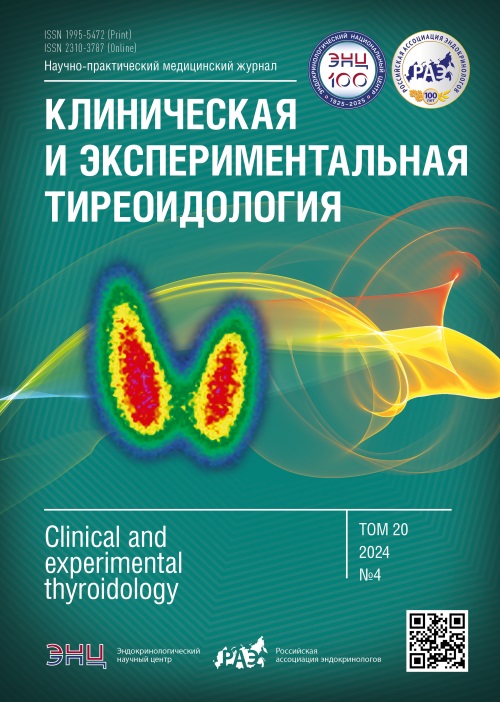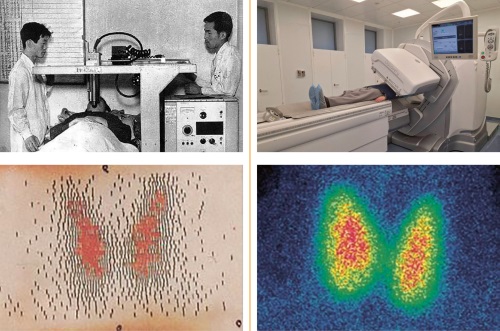BACKGROUND: For thyrotoxicosis, thyroid enlargement and the presence of nodules are considered to be the leading clinical criteria. The ultrasound method allows to assess these two criteria and additionally the echogenicity of the gland.
AIM: to find out the state of three ultrasound criteria - echogenicity, size and structure of the thyroid gland in thyrotoxicosis.
MATERIALS AND METHODS: The data of echogenicity, size and structure of thyroid gland in 3633 patients with thyrotoxicosis were analysed. The mean age was 48.10±14.08 years, men — 721, women — 2912. Ultrasound studies were performed in B-mode. The upper criterion of the norm of the gland size for women was considered to be the volume of 18 cm3, for men — 25 cm3. The sizes exceeding the specified volumes were considered as pathological. Echogenicity of the gland was compared with parotid salivary gland and divided into normal and pathological criterion. The structure of the thyroid gland was divided into normal and pathological. The criterion of structure pathology was the presence of single or multiple volumetric formations. Ultrasound criteria were divided into simple and combined types. If one criterion was classified as pathological, while the other two remained normal, this situation was considered as a simple type of pathology. If two or three criteria changed simultaneously, the pathology type was labelled as combined.
RESULTS: a simple type of echogenicity pathology was observed in 19.5% of cases, size in 0.8%, and structure in 1.2%. Combined pathology of echogenicity and size was observed in 69.1% of cases, echogenicity and structure in 29.1%, size and structure in 24.6%. Combined pathology of all three criteria was observed in 23.0% of cases. In 1.3% of thyrotoxicosis cases, all three ultrasound indicators remained within normal limits. A subtype of echogenicity pathology is characterized by diffuse (56.7%) and localized (38.1%) reductions. The mean area of localized echogenicity reduction was 37.12±12.43%.
CONCLUSION: the leading ultrasound manifestation of thyrotoxicosis was changed in echogenicity, followed by changes in size, and then structure.











































